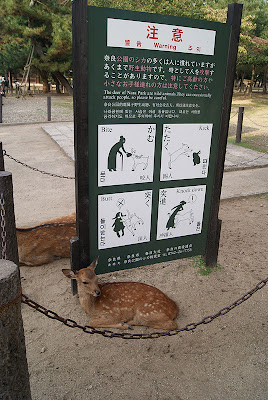In the time I have been in Japan my impressions of the country have not changed so much, as my perspective has. I have learned to view things through a different lens and to look at things deeper and consider all aspects of something instead of just judging things on surface appearance and molding them to preexisting stereotypes. I think change has come out of the work we have done in visual anthropology class. We have seen lots of examples of what to do and what not to do and with this the dangers of assumptions and bias when portraying an aspect of life.
When at first I was noticing all the small differences between America and Japan I was molding my impressions around what I had heard about the country; the collectivist culture, the sexual repression, the advanced technology, the rich traditions. And this was really a bad way to form impressions about Japan. While there definitely is a collectivist undertone, I have met so many unique and individual Japanese friends who break from this mold. While one could argue this is just n exception, there are enough people like this that to generalize the entire population and leave these people out is foolish. And this is just one small example.
 |
| Shinya, one of my more unique Japanese friends. |
Another specific impression I had early on that has changed is the racism I felt when going into stores or restaurants. At the beginning I was upset by this and thought it was blind racism but after going through a semester I kind of understand it. So many international students just behave poorly in public and if I owned an establishment I’d want to distance myself from these people as well. The trend of gaijin smash is enough to justify this prejudice. Too many international student don’t behave because they feel like they’re not expected to, or don’t have to because their outsiders. They justify embarrassing, rude behavior with terms like “gaijin smash” or “no shame on foreign roads”. So although I have encountered racism, I have come to realize that it is not unjustified.
As a whole my impressions have slightly changed in realizing that Japan is not as crazy and uniform as it is often portrayed. While it is to a certain extent, when viewed without preexisting biases, the similarities between my home country and japan stand out more while the eccentricities wan in the background.
 |
| Some Gaijin Smash at a Karaoke joint in Hirakata. |





















